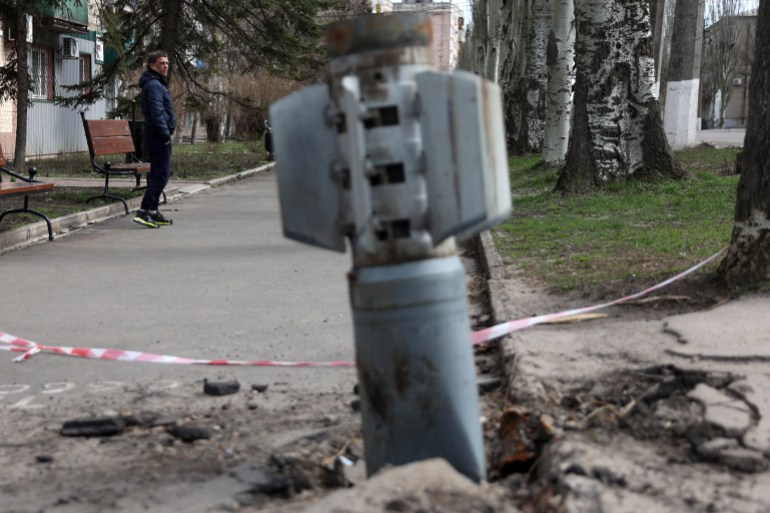US says Ukraine’s use of cluster bombs against Russia ‘effective’
White House national security spokesman says controversial US-provided bombs used against Russian military positions.
Controversial cluster munitions supplied by the United States are being used “effectively” by Ukrainian forces in their counteroffensive against Russia’s invasion, a senior Washington defence official said.
“We have gotten some initial feedback from the Ukrainians, and they’re using them quite effectively,” White House national security spokesman John Kirby told reporters on Thursday.
“They are using them appropriately, they are using them effectively,” Kirby said, adding that additional details could be obtained from Ukraine.
Kirby also said the US-provided cluster bombs – which are banned by more than 120 countries – were having an impact on Russian defensive formations and the manoeuvring of Russia’s forces.
Citing an anonymous Ukrainian source, the Washington Post newspaper reported on Thursday that Kyiv’s forces are using cluster munitions against “well-fortified Russian positions that have slowed Ukraine’s summer offensive”.
According to the Washington Post, Russian front line positions in the east and south of Ukraine, which have successfully slowed Ukraine’s counteroffensive, have been “densely mined with antitank and antipersonnel mines and trip wires in areas” between 4.8km and 16km deep (three to 10 miles).
Cluster munitions are being used to “break up” Russian trenches, a Ukrainian military official told the newspaper.
Washington, DC-based think tank, the Institute for the Study of War (ISW), said on Thursday that Ukraine’s presidential adviser Mykhailo Podolyak had “reiterated that the Ukrainian counteroffensive will be slow and difficult but will prevent Russian forces from retaking the battlefield initiative”.
#Ukraine‘s #counteroffensive against #Russia‘s invasion has enormous ramifications for the future of global security.
Follow and support #ISW as we explain the strategic implications of the #UkraineWar. pic.twitter.com/4cEL4sw8eI
— ISW (@TheStudyofWar) July 21, 2023
The US and Ukraine have received broad criticism for the provision and use of cluster munitions on the battlefield and which have been banned by many countries because of the long-term risks posed to civilians.
Human Rights Watch said earlier this month that Russia had “extensively used cluster munitions, causing many civilian deaths and serious injuries”, while Ukrainian rocket attacks using cluster munitions on the then-Russian-occupied city of Izyum in 2022 had killed at least eight civilians and wounded 15 more.

The rights group said that both Kyiv and Moscow should stop using such “indiscriminate weapons” that had killed civilians.
Cluster weapons typically release large numbers of smaller bomblets that can kill indiscriminately over a wide area, and those that fail to explode pose a danger for decades after.
Following confirmation that the US was providing the banned weapons to Ukraine, Russian President Vladimir Putin said his forces would also use cluster munitions – though military experts believe the Kremlin has already deployed such munitions in its war against Ukraine.
Ukraine has pledged to use the cluster bombs only to dislodge concentrations of Russian enemy soldiers, but each side has accused the other of already using cluster bombs in the conflict.
Reuters news agency reported on Thursday that on the front line near Kupiansk, a railway hub Ukraine recaptured last month in the east of the country’s Kharvik region, a Ukrainian artillery unit commander said his forces had received newly issued cluster munitions, and could start firing them soon: “Maybe today or tomorrow.”
While the use of cluster bombs does not violate international law, using them against civilians can be a violation, and a convention banning their use as been joined by more than 120 countries. Signatory countries have agreed not to use, produce, transfer or stockpile the weapons, and to destroy those in their inventories.
The US, Russia and Ukraine have not signed that agreement.




